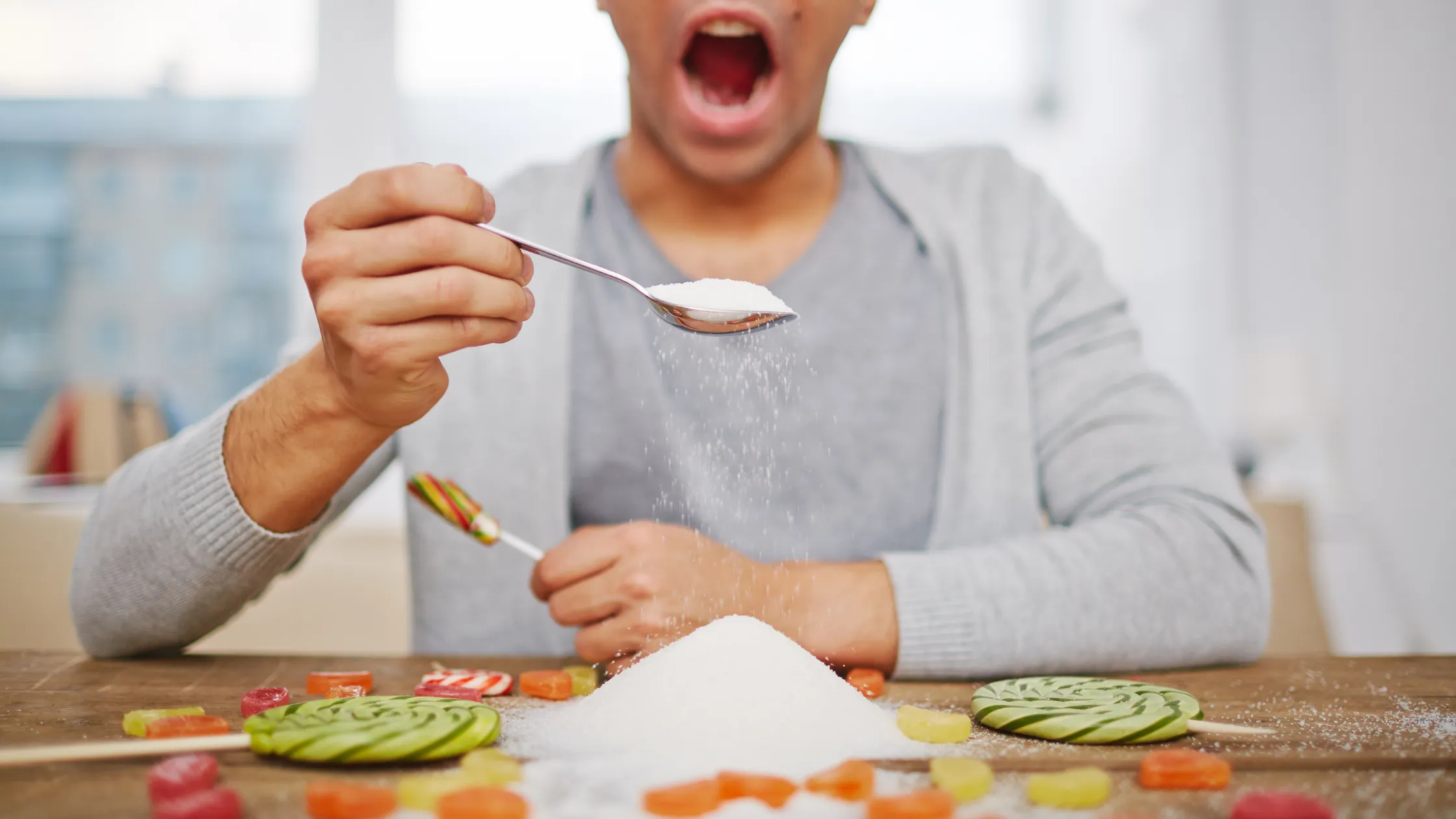10 Ways to Deal with Sugar Addiction

Sugar addiction refers to a pattern of behavior where a person develops a strong and often uncontrollable craving for sugary foods or drinks, and continues to consume them despite negative physical or emotional consequences.
While sugar doesn't cause addiction in the same way as drugs like nicotine or opioids, it can activate the brain’s reward system, particularly the release of dopamine, which can lead to repeated cravings and overconsumption. Over time, people may develop a tolerance (needing more to feel the same pleasure) or experience withdrawal-like symptoms when cutting back.
Common signs of sugar addiction include:
• Craving sugar even when not hungry
• Feeling a "high" or sense of relief after eating sugar
• Difficulty cutting back despite wanting to
• Eating more sugar than planned
• Feeling sluggish or irritable without it
• Using sugar to manage stress, anxiety, or depression
Potential consequences:
• Weight gain
• Blood sugar imbalances
• Increased risk of type 2 diabetes, heart disease, and fatty liver
• Mood swings and energy crashes
It’s often tied to emotional eating or habit rather than physiological dependence, but the psychological grip can be very strong.
Here are 10 Ways to deal with sugar addiction so you can be free of it:
- Drink water. Sometimes sweet cravings are a sign of dehydration. Before you go for the sugar, have a glass of water and wait a few minutes.
- Eat naturally-sweet vegetables and fruit to crowd out your sugar cravings.
- Avoid chemicalized, artificial sweeteners and foods with added sugar. Use gentle sweeteners like maple syrup, brown rice syrup, dried fruit, stevia, and barley malt.
- Reduce or eliminate caffeine. The ups and downs of caffeine include dehydration and blood sugar swings, and may cause sugar cravings.
- Get more sleep, rest, and relaxation. Simple carbohydrates, such as sugar, are the most readily-available source of energy for an exhausted body and mind. If you’re in a state of chronic stress and/or sleep deprivation, your body will crave the quickest form of energy available – sugar.
- Get physically active. Start with simple activities like walking and yoga. Start with 10 minutes a day and gradually increase. Being active helps balance blood sugar levels, boost energy, and reduce tension, decreasing the likelihood that you’ll want to self-medicate with sugar.
- Eliminate fat-free or low-fat packaged snack foods. These foods contain high quantities of sugar to compensate for lack of flavor and fat, which will send you on a roller coaster ride of sugar highs and lows.
- Experiment with spices. Coriander, cinnamon, nutmeg, cloves, and cardamom will naturally sweeten your food and reduce cravings.
- Evaluate the amount of animal food you eat. According to yin-yang principles of eating (such as in Macrobiotics and Traditional Chinese Medicine), eating too much animal food (yang) can lead to cravings for sweets (yin). Imbalances can also occur when you eat too little animal protein. Through experimentation and intuition, you can find which foods create balance for you as an individual.
- Slow down and find sweetness in non-food ways! Cravings almost always have a psychological component. By identifying the underlying causes of food cravings and making lifestyle adjustments accordingly, you can find balance and take charge of your health. When life itself becomes sweet, excess sugar isn’t needed!
Join other wellness do-it-yourselfers in the FREE 52 Weeks of Wellness Facebook Group. We have a new challenge every Monday, recipes, tips, fun and so much more!!!
